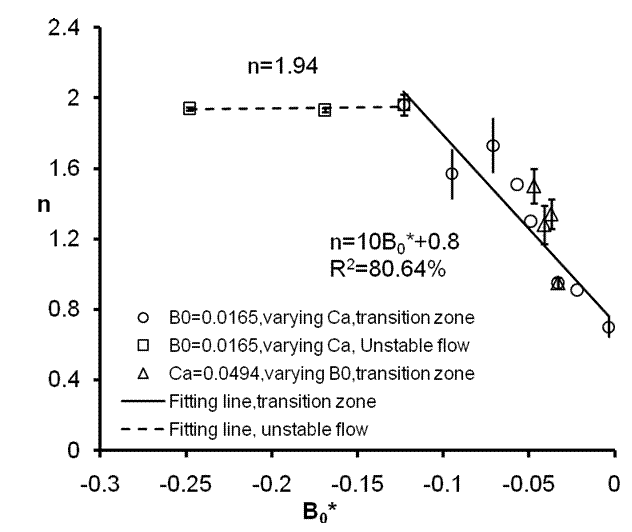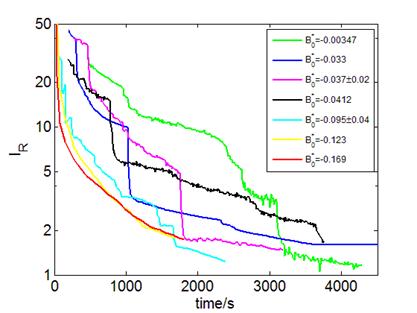AmericanChemicalSociety.com
Reports: G8 48575-G8: The Use of Electrical Measurements to Investigate Multiphase Flow Channeling During Reservoir Production
Stephen Moysey, Clemson University
Summary of Project Objective
Detecting and quantifying multiphase flow channeling is a critical problem for the management of petroleum reservoirs. The occurrence of preferential flow paths can cause short circuiting of viable reserves during waterfloods leading to decreases in sweep efficiency and large volumes of residual oil left unrecovered. Identifying flow channeling in reservoirs is essential for implementing management strategies for enhancing oil recovery. Low-frequency electromagnetic methods have excellent potential for monitoring reservoir production given the sensitivity of electrical resistivity to oil-water saturation. Effective interpretation of this data, however, requires a good understanding of how resistivity is affected by flow processes including flow channeling.
This study is using physical analog models to study how DC electrical responses evolve with flow channeling during a waterflood experiment. Experiments are being conducted in a thin (approximately 2D) flow cell within which the electrical measurements are performed as the spatial variation of oil/water saturation is mapped in real time using a camera.
Second Year Progress
Over the second year of the project we have completed an extensive set of flow tests using the experimental imaging system constructed and tested in the previous year. In order to investigate different scenarios leading to flow instability in reservoirs related to viscous fingering we performed a series of 32 experiments altering the relative influence of gravity, viscous, and capillary forces. In each experiment Nigrosine dyed water was used to displace mineral oil. The influence of gravity was controlled by rotating the tank to various angles relative to vertical. The balance between viscosity and capillarity was controlled by varying the flow rate applied to the tank. The net balance of forces affecting stability in our experiments is captured using the generalized Bond number, defined as the difference between the Bond and capillary numbers. The generalized Bond number is a useful measure of reservoir flow conditions as it is a value that could potentially be estimated by petroleum engineers based on reservoir characteristic and site-specific production practices.
The change in flow stability with Bo* is shown in Figure 1, with greater instability at smaller (i.e., more negative) generalized Bond numbers. The effect of the changing flow conditions can be seen in the transient resistivity data in Figure 2. The change in resistivity over time during the water flood is significantly different for stable flows versus unstable flows (Figure 2a). For any given saturation value, the resistivity is higher for stable versus unstable flow conditions because in stable flow the invading water front displaces oil uniformly whereas a single finger bridging the tank during unstable flow (i.e., a small increase in water saturation) can significantly decrease the resistivity (Figure 2b).
The control of the flow conditions over the saturation-resistivity relationship can be seen by using the data to estimate the saturation exponent from Archie's law for each experiment. Conceptually, the saturation exponent captures the connectivity of the electrically conductive (i.e., water) phase in the tank. The results shown in Figure 3 indicate that there is a strong dependence of the saturation exponent on the generalized Bond number, indicating the petrophysical relationship used to interpret resistivity data is dependent on flow conditions. During the transition between stable and unstable flow the change in the saturation exponent appears to be approximately linearly dependent on the generalized Bond number. For highly unstable flows, i.e., when Bo*< -0.113, we have found that the saturation exponent reaches a constant value.
In conclusion, we have found that there is a need to consider the specific flow conditions in a reservoir to obtain accurate estimates of reservoir saturation from resistivity measurements. If an independent measure of reservoir saturation is available, e.g., using seismic data, it may also be possible to experimentally infer the onset of flow instability within a reservoir. In both cases, our work clearly demonstrates that geophysical interpretations should be performed in consultation with a petroleum engineer so that reservoir management practices can be considered within the interpretation workflow.
Career Impacts
This project has enabled new research capabilities in my laboratory and is therefore having a significant impact on my career. As a result of the project I have made significant advances in developing protocols for performing multiphase flow experiments and resistivity measurements. I am expanding both my core knowledge base and developing technical skills that will be useful in a wide range of future research.
Project Impact on Students
Three undergraduate students and one graduate student have contributed to this project. The undergraduate students, one geology major and two electrical engineering majors, have worked closely with me in developing and testing the hardware and software for the resistivity measurement system. The impact on these students is clear by their remarks on how the project has extended their education and viewpoint beyond what is possible in a classroom setting. For example, as a result of his involvement in the project one of the electrical engineering students is pursuing graduate study focused on the use of sensor systems in earth sciences. The graduate student working on the project, Zuolin Liu, recently defended her MS thesis and is now planning to apply to PhD programs in petroleum engineering as a result of her experiences during this research.
Figure 1: Effect of
the generalized bond number on flow instability during water flood experiments. Figure 2: (a)
Change in tank bulk resistivity index over time during each waterflood
experiment. (b) Relationship between bulk
resistivity and saturation for each experiment. Figure 3: Dependence
of saturation exponent from Archie's law on the generalized bond number Bo*. The transition from stable to unstable flow
occurs for Bo* between 0 and -0.113.
Flow is highly unstable for Bo* less than -0.113.


Copyright © American Chemical Society



